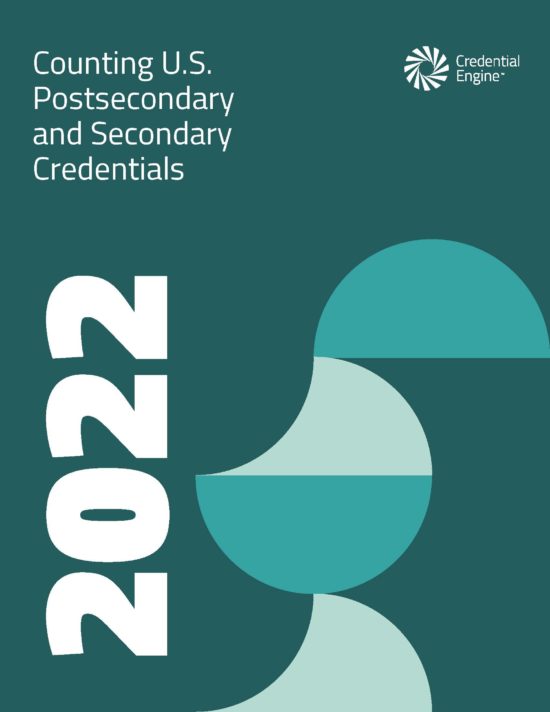Executive Summary
Learners, educators, and policymakers recognize that high school completion and education beyond high school are critical for individuals to thrive in a complex global economy. This fourth Counting Credentials report attempts to count the total credentials available, following a thorough and rigorous method for each credential type. The report identifies 1,076,358 unique credentials in the U.S.
Inside the Report
The report identifies 1,076,358 unique credentials in the U.S. in 18 detailed credential categories across four broad types of credential providers:
- Post-Secondary Educational Institutions— 350,412 degrees and certificates
- Massive Open Online Course (MOOC) Providers—13,014 course completion certificates, micro-credentials, and online degrees from foreign universities
- Non-academic providers—656,505 badges, course completion certificates, licenses, certifications, and apprenticeships
- Secondary Schools—56,179 diplomas from public and private secondary schools, alternative certificates from secondary schools, and high school equivalency diplomas
As in prior years, this report demonstrates the nation’s need to dramatically improve transparency in the credential marketplace to promote economic growth and individual mobility. We will need to know more about how credentialing practices overlap, including how certificates offered by institutions of higher education stack to further certificates and degrees, as well as how badges are utilized to represent these and other credentials. More information is needed regarding the content of different credentialing programs to properly categorize and understand them, such as the competencies they aim to highlight, the time they require to complete, and their relative value in the marketplace
Two new credential categories were added this year at the secondary level: alternative high school completion certificates and high school equivalency awards for individuals completing a set of requirements or passing tests that do not require graduating from high school with a full diploma. This is the first time the report has recognized these alternative credentialing outcomes resulting from a high school education.
New in this report is the number of credential providers associated with each of four broad types of providers— post-secondary educational institutions, MOOC providers, non-academic providers, and secondary schools—as well as for each of the 18 credential categories.
Also in this report is a state-by-state breakdown of credentials offered by state-based entities in seven categories: degrees, certificates, licenses, registered apprenticeships, high school diplomas, high school alternative certificates, and high school equivalency diplomas.
Education and Training Expenditures Report
For the second year, we have issued an additional report to estimate U.S. spending on training and education. This 2022 report updates the total expenditures by educational institutions, employers, federal grant programs, states, and the military to $2.133 trillion.
Key Findings
credentials in the United States, including diplomas, badges, certificates, apprenticeships, certifications, licenses, and degrees of all types and levels.
spent annually in the U.S. on the delivery and attainment of credentials.
Credential providers across the U.S.


